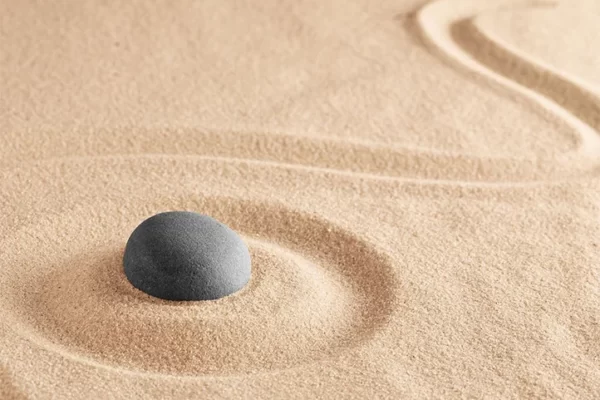Dance movement therapy is a form of psychotherapy where dance and movement are used to help people improve their mental and physical health. This type of therapy is applied in individual or group settings to treat a wide range of psychological issues, including stress, anxiety, depression, trauma, as well as to enhance overall emotional and physical well-being.
Dance movement therapy is a unique combination of dance and psychotherapy aimed at improving psychological and physical health. Based on the idea that body and mind are closely connected, this therapy uses dance as a means to express and explore emotions, as well as to strengthen social and personal skills. Dance movement therapy doesn’t just teach dance movements; it helps participants become aware of and express their feelings, improve their mood, and cope with emotional and physical challenges. This type of therapy is suitable for people of all ages and can be adapted to meet the individual needs of each person.
The history of dance movement therapy dates back to the early 20th century when pioneers like Isadora Duncan and Rudolf Laban began exploring the connection between dance and emotional expression. They believed that dance could be not only an art form but also a tool for personal growth and healing.
In the 1940s in the United States, Marian Chace began systematically using dance for therapeutic purposes. She developed methods for using dance to help people express their emotions and resolve psychological conflicts. This led to the creation of the first training programs in dance movement therapy and the establishment of professional standards in this field.
Since then, dance movement therapy has significantly evolved and spread worldwide. It is now recognized as an important branch of psychotherapy and is used in various settings, including hospitals, schools, rehabilitation centers, and private psychological practices.

Dance Movement Therapy: Principles and Methods
Dance movement therapy is unique in its approach to healing and self-discovery. Based on the principle that body and mind are closely interconnected, it offers a path to harmony and balance through dance and movement. In this therapy, body movements are not just physical exercises; they become a language through which one can express what is difficult or impossible to articulate in words.
It is important to understand that dance movement therapy does not aim to teach a person to dance beautifully. Rather, it invites participants to explore and release their natural movement impulses, leading to deeper self-awareness and emotional liberation. This approach helps open new horizons for personal growth and psychological well-being.
By using body movements as a key to the inner world, dance movement therapy offers a unique path to healing that is accessible to everyone, regardless of dance experience or physical limitations. It teaches us how to use movement to explore and transform our inner experiences.
Key Principles of Dance Movement Therapy
The key principles of dance movement therapy include the following important aspects:
- Unity of body and mind. This principle is based on the understanding that the physical state of the body is closely linked to the emotional and mental state of the mind. The therapy aims to restore this harmony.
- Self-expression through movement. Dance movement therapy uses dance as a means to express and explore internal feelings and experiences, often those that are difficult or impossible to express in words.
- Self-awareness and mindfulness. The therapy encourages participants to gain deeper insight into themselves and their emotions, as well as to become aware of their body and its movements.
- Therapeutic process. In dance movement therapy, the process is given more attention than the outcome. This means that what the participant experiences and explores during the process is more important than the technical execution of dance movements.
- Empathy and support. The therapist provides a safe, supportive space where participants can freely explore and express their emotions through movement.
- Individual approach. Each participant is approached individually, taking into account their unique experiences, physical characteristics, and emotional needs.
- Integration and healing. The goal of dance movement therapy is not only to express feelings but also to integrate and transform them, promoting personal growth and healing.
- Creativity and experimentation. The therapy encourages creativity and experimentation with various forms of movement, allowing participants to find new ways of self-expression and self-understanding.
These principles form the foundation of dance movement therapy and help participants achieve a deeper understanding of themselves and their internal processes, contributing to their emotional and psychological healing.
Methods and Techniques of Dance Movement Therapy
Dance movement therapy includes various methods and techniques that contribute to emotional and physical healing. Here are the main ones:
- Free movements. This is the basis of dance movement therapy, where participants use any improvised movements to express their feelings and emotions.
- Directed movements. The psychotherapist may suggest specific movements or sequences aimed at achieving certain therapeutic goals, such as relaxation, stress relief, or overall well-being.
- Rhythm and music. The use of music and rhythm to stimulate movement and self-expression. Music is selected to create a specific atmosphere or evoke certain emotions.
- Symbolic and metaphorical movements. Participants are invited to use movements to represent certain ideas, feelings, or situations, helping them to better understand and process their inner experiences.
- Mirroring. The therapist or other group members may “mirror” the movements of the person, helping them to see themselves from a different perspective and better understand their feelings.
- Use of space. Conscious use of space in dance helps participants explore their relationship with the world and others around them.
- Body-oriented techniques. For example, breathing exercises for relaxation help participants connect with their body and consciousness.
- Playful techniques. The use of playful forms and exercises to reduce tension and encourage creative self-expression.
- Reflection and discussion. After dance exercises, discussions are often held where participants share their feelings and experiences, contributing to a deep understanding and integration of the experienced emotions.
By combining these techniques, dance movement therapy provides a powerful tool for personal growth, emotional release, and physical healing.
The Role of Music and Rhythm in Dance Movement Therapy
Music and rhythm play a crucial role in dance movement therapy, as they are the primary catalysts for movement and emotional expression.
- Stimulating movement. Music and rhythm often serve as sources of inspiration for movement. They help participants start moving, especially when words or thoughts are insufficient stimuli.
- Expressing emotions. Different musical styles and rhythms evoke different emotions and moods. This allows participants to explore and express a wide range of feelings through dance.
- Creating atmosphere and context. Music can create a specific atmosphere or context for a psychotherapy session, helping participants immerse themselves in the process and open up to new experiences.
- Rhythm as structure. The rhythmic structure of music provides a sense of safety and predictability, which is especially important for people experiencing stress or psychological trauma.
- Therapeutic interaction. The psychotherapist can use music to establish a connection with the client, for example, by selecting music that reflects or responds to their mood.
- Spontaneity and improvisation. Music and rhythm encourage spontaneity and improvisation, allowing participants to move freely and express themselves in dance.
- Synchronization and group dynamics. In group sessions, music helps participants synchronize their movements, creating a sense of unity and mutual understanding.
Thus, music and rhythm are integral parts of dance movement therapy, enriching the therapeutic process and contributing to the deep personal and emotional growth of participants.

Psychological and Physiological Aspects
Dance movement therapy represents a multi-level approach that deeply impacts both mental and physical health. This therapy is based on the belief that the body and mind are one, and changes in one inevitably lead to changes in the other. Through movement and dance, unique pathways for healing and self-discovery are revealed during therapy.
Dance, as a means of self-expression, allows participants to experience and express emotions that may be suppressed or unacknowledged. This process not only promotes emotional release but also helps in developing a deeper understanding of one’s emotional states. On the other hand, the physical aspect of dance movement therapy supports the improvement of coordination, flexibility, and overall physical fitness.
By integrating movements, dance movement therapy offers a unique opportunity to learn new ways of regulating stress and managing emotions. This leads to improved psychological well-being and an enhanced quality of life.
Impact of Dance Movement Therapy on Mental Health
Dance movement therapy significantly impacts mental health, offering a unique approach to treatment and self-discovery. Here are some key points of this impact:
- Emotional expression and release. Dance movement therapy helps participants express suppressed or unacknowledged emotions through body movements, contributing to their release and processing.
- Reduction of stress and anxiety. Regular participation in dance movement therapy helps reduce anxiety and stress levels, creating a sense of relaxation and well-being.
- Improvement of self-esteem and self-perception. Through dance movement sessions, participants often gain greater confidence in themselves in themselves, better understand and accept their bodies and personalities.
- Development of social skills. Group dance movement therapy sessions promote the development of communication skills and teamwork, improving interpersonal relationships.
- Increased awareness and mindfulness. This type of psychotherapy requires an active understanding of one’s body and emotions, helping to develop mindfulness and awareness skills.
- Reduction of depression symptoms. Participants in therapy often report improved mood and reduced depression symptoms due to active emotional expression and increased endorphin levels during dancing.
- Processing trauma and psychological healing. Dance movement therapy is effective in processing psychological trauma, providing a safe space for expressing and working through traumatic experiences.
- Improvement of cognitive functions. Regular sessions improve concentration, memory, and other cognitive functions, as dance involves elements of planning and movement sequences.
It can be confidently said that dance movement therapy is a powerful tool for improving mental health, providing a comprehensive approach to treatment and self-development.
Impact of Dance Movement Therapy on Physical Health
Dance movement therapy has a significant impact on physical health and well-being. Here are the main examples of this impact:
- Improvement of coordination and flexibility. Regular dance movement therapy sessions help improve movement coordination, body flexibility, and overall physical fitness.
- Increase in physical activity and endurance. Dancing is an effective way to increase physical activity, contributing to greater endurance and muscle strength.
- Reduction of chronic pain. Through muscle strengthening and improved flexibility, dance movement therapy helps reduce chronic pain, especially related to the musculoskeletal system.
- Improvement of balance and posture. Regular participation in dance sessions contributes to better balance and posture, which is especially important for older adults and those recovering from physical injuries.
- Stimulation of circulation. Dance increases blood circulation, promoting better oxygen and nutrient delivery to tissues and improving cardiovascular system function.
- Weight loss and improved metabolism. Dance movement therapy contributes to weight loss and improved metabolism due to increased physical activity.
- Prevention and recovery. This form of therapy can be used as a preventive measure against various diseases associated with a sedentary lifestyle, as well as part of a recovery program after injuries or surgeries.
- Improvement of overall well-being. Physical activity during dance movement therapy increases endorphin levels, contributing to improved mood and overall well-being.

Practical Application of Dance Movement Therapy
Dance movement therapy, being a unique combination of art and science, has found its application in a wide range of fields and contexts. This flexible and multifunctional practice can adapt to the needs of various populations, providing a wide range of therapeutic benefits. From healthcare institutions to educational settings, dance movement therapy demonstrates its ability to have a profound impact on human health and well-being.
The application of this method extends far beyond traditional therapeutic settings, covering various age and social groups, including children, adults, the elderly, and special populations such as people with disabilities. In each of these contexts, dance movement therapy adjusts to meet the unique needs and goals of participants.
Its value is especially noticeable in the field of mental health and physical rehabilitation, where it offers new ways to process emotions, develop social skills, and strengthen the body. The ability of such a psychotherapeutic approach to transform and heal makes it an integral part of modern therapeutic practices.
Dance Movement Therapy in Medicine
Dance movement therapy finds wide application in the medical field, offering unique approaches to treatment and rehabilitation. In medicine, it is used to alleviate physical and psychological conditions in patients, providing a comprehensive approach to their health and well-being.
- Rehabilitation after injuries. Dance movement therapy helps speed up recovery from physical injuries by improving motor skills, flexibility, and overall physical fitness.
- Treatment of chronic diseases. For patients with chronic conditions such as arthritis or fibromyalgia, dance movement therapy helps reduce pain and improve quality of life.
- Mental health. It is effectively used in the treatment of depression, anxiety, and post-traumatic stress disorder, promoting emotional release and psychological stabilization.
- Work with the elderly. Dance movement therapy helps maintain physical activity, social interaction, and cognitive functions in elderly people.
- Oncology support. This therapy improves the emotional state of cancer patients, reduces the side effects of their treatment, and increases overall vitality.
- Work with children and adolescents. In pediatrics and adolescent psychiatry, dance movement therapy is used to address emotional and behavioral problems, promoting better self-expression and social adaptation.
- Neurological disorders. In neurology, this therapy is used to treat conditions such as Parkinson’s disease and stroke, helping improve coordination and control of movements.
Dance movement therapy is a truly valuable tool in medical practice, providing a more holistic and humane approach to patient treatment and recovery.
Dance Movement Therapy in Education and Social Work
Dance movement therapy also plays an important role in education and social work for the development, learning, and support of various populations.
- Educational institutions. In schools, dance movement therapy is used to support children’s physical, emotional, and social development. It helps improve students’ concentration, self-regulation, and interpersonal skills, as well as encourages creative self-expression and group interaction.
- Special education. In special education classes, dance movement therapy is applied to work with children with special educational needs, including autism, attention deficit hyperactivity disorder, and other learning difficulties. It helps develop motor skills, social skills, and empathy.
- Social work and care. In social work, dance movement therapy is used to support people going through difficult life situations, including domestic violence, poverty, or addiction.
- Work with the elderly. In nursing homes and adult day care centers, dance movement therapy is used to maintain physical activity, social interaction, and cognitive functions in elderly people.
- Youth programs. In youth centers and programs, dance movement therapy is used to support adolescents and young adults, helping them cope with emotional issues, boost self-esteem, and develop social communication skills.
These examples show how dance movement therapy can be integrated into various educational and social programs, enriching their content and increasing effectiveness in achieving educational and social goals.
Description of a Typical Dance Movement Therapy Session
A typical dance movement therapy session usually follows this structure:
- Session start and warm-up. The session begins with a short warm-up to help participants relax and focus. This may include breathing exercises and light stretching.
- Main part. Then follows the main part of the session, during which participants express their feelings and emotions through body movements. The therapist may provide specific tasks or allow participants to move freely to music.
- Interactive exercises. In group sessions, interactive exercises such as mirroring or improvisation may be used to help participants interact with each other and develop social skills.
- Slowdown and reflection. As the session nears its end, the dance pace slows down, allowing participants to gradually transition from active movements to a more relaxed state. Sometimes this time is also used for discussing and reflecting on the experiences during dance movement therapy.
- Session closure. The session concludes with calming exercises such as meditation or deep breathing, helping participants return to a normal state of consciousness and relax.
It is important to note that each dance movement therapy session is unique and can be adapted to the needs and goals of a particular group or individual.
Self-Application of Dance Movement Therapy
Here are some tips for those who want to practice dance movement therapy independently:
- Create an appropriate space. Find a quiet place where you can move freely without distractions.
- Choose music that inspires you. Music plays a key role in dance movement therapy, so select tunes that reflect your current mood or emotions.
- Follow your body. Start with small movements and let your body guide you. Don’t focus on the “correctness” of movements, but rather listen to your sensations.
- Try different types of movements. Experiment with different speeds, amplitudes, rhythms, and energy levels. Notice the movements that evoke emotions and feelings.
- Use breathing as a tool. Focus on your breathing. This will help deepen your practice and strengthen the connection between body and mind.
- Record your experiences. After practice, write down your thoughts and feelings in a journal. This will help you better understand yourself and your inner world.
- Be patient and kind to yourself. Dance movement therapy is a journey of self-discovery that takes time and patience. Be kind and patient with yourself throughout this process.
Remember, independent practice does not replace professional dance movement therapy, but it can be a valuable supplement to it.
Recommendations for Choosing a Psychotherapist
When choosing a psychotherapist for dance movement therapy, I advise paying attention to the following aspects:
- Qualifications and education. Look for a psychotherapist with appropriate education and certification in dance movement therapy.
- Work experience. It is important that the psychotherapist has experience working with clients who have had needs or problems similar to yours.
- Approach and specialization. Learn about the methods and approaches the psychotherapist uses and ensure they match your expectations and goals.
- Reviews and recommendations. Searching for reviews from previous clients or recommendations from acquaintances will help you choose the right specialist.
- Personal comfort. It is important that you feel comfortable and safe with the chosen therapist, as this is a key factor for successful therapy.
- Trial sessions. Some psychotherapists offer trial sessions to help you understand if their style of work suits you.
- Location and schedule. Make sure the location and schedule of the sessions are convenient for you.
Keep in mind that to achieve the best results, it is important to choose a psychotherapist who matches your individual needs and goals.

Conclusion
Dance movement therapy continues to evolve, adapting to new research and trends in healthcare and psychotherapy. One of the key trends is the strengthening of its empirical foundation through scientific research, which contributes to the recognition of this method within the medical community.
There is also a growing interest in integrating dance movement therapy into conventional medical and educational institutions. The trend is expanding the use of this therapy for various population groups, including the elderly, children with special needs, and individuals with chronic illnesses. Additionally, there is interest in online formats and the development of digital therapeutic tools, making this psychological method more accessible to a broader audience.
Do not hesitate to experiment with different forms of dance movement therapy and remain open to new experiences. Remember that each therapeutic journey is unique, and the key to success lies in patience, practice, and self-awareness.




